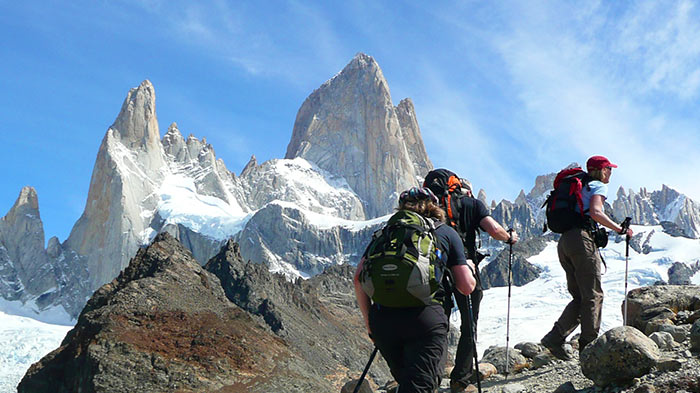
Bhutan Trekking Season: when is the best time to trek Bhutan?
The long-standing policy of "High Value and Low Impact" in Bhutan has meant that the natural environment has been preserved in its most natural form, and the landscape has suffered little from the growth of the country as a whole. Unlike most areas where you can trek through the mountains of the Himalayas, Bhutan treks have a more natural feel to them, and the cultures of touting and begging are things that are completely alien when traveling through the Kingdom of the Thunder Dragon.
With dozens of stunning treks through the unspoiled landscape and beautiful natural forests, trekking in Bhutan offers more than in most other places in the Himalayas, and the peace and solitude that many people look for in the mountains can be found more easily in Bhutan. However, it is essential to know when you can trek in Bhutan, as the kingdom has a varying climate, and different treks are best done at different times of the year.
Bhutan Trekking Season: understand climatic zones in major trekking regions in Bhutan
Trekking in Bhutan is unlike trekking anywhere else in the world, and the seasons play a big part of when you can trek certain trails, especially those in the mountainous north of the kingdom. There is a trek for every month of the year in Bhutan, from the famous Gangtey treks in January to the Punakha Winter Treks in December. Bhutan does have four seasons - spring, summer, autumn, and winter - but the climate in each season cannot really be generalized due to the difference in altitude from north to south. The flat southern area has a subtropical climate, with mild winters and a hot spring, as well as a heavier monsoon season.
Spring in Bhutan, which runs from the beginning of March to the end of May, is known as the pre-monsoon season in the kingdom. Temperatures in the spring can range from -20 in the far north to as high as 32 degrees in the far south, around Phuentsholing and the border with India. Thunderstorms become more dominant in the south and central regions as the summer monsoon gets underway, and while temperatures in the south can get as high as 31 degrees throughout summer, in the north, the temperatures can still be as low as 22 degrees, and the rainfall is a lot lighter, with very little falling in the high Himalayan mountains along the border with Tibet.
 Autumn, from October to November, is one of the best time to trek Bhutan.
Autumn, from October to November, is one of the best time to trek Bhutan.
Autumn is one of the best times for trekking in Bhutan, from October to November, though it is a short season before winter sets in. Temperatures in the south of the kingdom can still be warm, reaching highs of around 25 degrees, with bright sunshine throughout the short autumn period and colorful leaves dropping from the trees to cover the ground. As you move north, the sunshine remains but the temperatures start to drop, and in the mountains, it can get as low as 6-8 degrees at night.
Winter is the time of the snows in the higher regions of the kingdom, and in the far north, snow can cover the peaks and passes, making some of the higher treks impossible until the thaws in March. Temperatures in the mountains drop to around 12-15 degrees during the day, when the sun shines brightly, and as low as -5 to -10 degrees at night, especially in January. In the south around Gelephu and the border, the temperatures remain pretty high, at around 23 degrees during the day, and dropping to around 10 degrees at night. The sun is bright in the winter months, and the days are shorter but fresher, as the cold winds from the north take a little of the intensity off the heat of the days.
Bhutan Trekking Season: recommended trekking months
From November to early March, the low-altitude treks are the ideal way to spend a winter in Bhutan, as the climate is milder than in the north, and the rains are few and far between. The low-altitude treks can actually be done throughout the year, with the exception of summer, when the monsoon rains can make the trails muddy and dangerous.
 The low-altitude treks in Bhutan will offer travelers an excellent chance to explore the kingdom.
The low-altitude treks in Bhutan will offer travelers an excellent chance to explore the kingdom.
Best Time for Trekking in Bhutan: October to November
Autumn is another great time for trekking, though the period is shorter, from mid-October to the middle of December. This is the most popular time for trekking in Bhutan, as there is often barely a wisp of cloud in the sky and the temperatures are comfortable throughout the higher areas of the mountains. With little in the way of snow in most places yet, the high-altitude treks are best done in the autumn. The best treks for the autumn season are treks such as the Bumthang Trek and the treks around Samtengang, Nabji Korphu, and Merak Sakten.
Second Best Time for Trekking in Bhutan: March to May
While the spring season is not yet ideal for trekking in the highest mountains, it is the perfect time for the lower altitude treks in the north-central and southern areas of Bhutan. From March to May, the conditions are pleasant for walking along the winding trails through the foothills and valleys of central Bhutan, with cooler temperatures than in the summer months. The scenery is also at its best, with rhododendrons blooming across the hillsides. Many of the more popular treks can be done in the spring months, from the Druk Path Trek and the Jhomolhari routes to the Gasa-Laya Trek, the Dagala Trek, and the Haa trek, among others.
Join-in Most Popular Bhutan Trekking Tours
Monsoon Seasons to Avoid for Trekking in Bhutan
The monsoon season in Bhutan runs from June to around the middle of September, depending on the Southwest Indian Monsoon. While it is not ideal for trekking, it is a great time to go sightseeing in Bhutan and discover the unique culture and enjoy the hotter summer months.
 While it is not ideal for trekking, you can experience the unique scenery and exotic culture in summer months.
While it is not ideal for trekking, you can experience the unique scenery and exotic culture in summer months.
June to August
June to August are the heaviest of the monsoon months, with most of the rain falling in July and August across the country. Most of the country has rain throughout the monsoon season, and while much of the rains can fall in the late afternoon and evenings, which is typical in monsoon-affected countries across Asia, there are times when the torrential downpours can last the whole day. Monsoon conditions are not ideal for trekking, as the rains can often wash out the trekking trails, making them muddy and slippery, and increasing the risks of accidents due to heavy rain and mudslides.
September
September is the tail end of the monsoon season, and the possibility of trekking largely depends on the severity of the monsoon rains and the season. Most of the time, September has a lot less rain than from June to August, and several of the treks can be done. However, there is no guarantee, and you will need to check the weather frequently to know whether it will be suitable for trekking or not.
What to Pack for Trekking in Bhutan in Different Seasons
Packing for Bhutan is not as complex as packing for other Himalayan countries throughout the year, and while there is a period of intense cold in the heights of the Himalayas in the winter months, the trekking in those heights is usually closed when it is coldest, and heavy thick clothing is not really needed in the rest of the kingdom. For the lower altitude regions, you can get away with normal warmish clothes for the winter, with a light raincoat just in case, and a sweater for the evenings. Cream and sunglasses are essential items, as the sun can be harsh in the winter. For altitudes over 2,000 meters, such as Thimphu, some warmer clothes for the evenings is a good idea, while a light jacket will suffice during the day. If you are heading for higher altitudes, then you will need to have warmer clothes and jackets, hat, gloves, and scarf to stay warm, and good hiking boots are essential all year round.
In the summer, lighter clothing is possible, especially in the lower areas where it can get pretty hot. Bring a raincoat, as there is a high chance of rain throughout the summer months, and at higher altitudes, you may need a sweater in the evenings. The autumn and spring season are less likely to rain, but a light rain mac can be useful. Bring some warmer clothes for the spring weather, as it can get cold at times, but for the autumn, there is little chance of colder temperatures, and a light down jacket will suffice for the cooler evenings.
Conclusion
Trekking in Bhutan can be done at any time of the year, depending on which trekking area you are heading for. Treks can even be done in the summer months at times, though it is not advisable as the weather can be unstable in the mountainous kingdom and is very changeable, with almost no notice. The ideal time for trekking in Bhutan is from late September to the end of May, with winter treks at lower altitudes and the spring and autumn being the ideal times to head for the hills and the mountains to get the best views of the stunning Himalayan peaks.

Energetic, responsible and reliable, Sonam is a guide with more than seven years experience informing visitors about heritage sites and attractions places in Tibet.


.jpg)


0 Comment ON "Bhutan Trekking Season: when is the best time to trek Bhutan?"